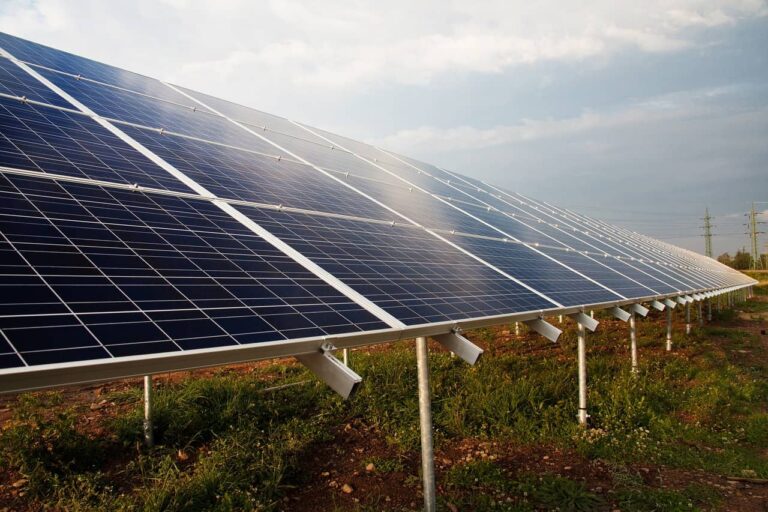How to Tell if a Product is Really Eco-Friendly
Worried about how your buying decisions affect the planet? You can make smarter, greener choices to help our world. Here’s a guide to make sure your purchases are truly…
Worried about how your buying decisions affect the planet? You can make smarter, greener choices to help our world. Here’s a guide to make sure your purchases are truly eco-friendly.
| Step | Action |
|---|---|
| 1. | Check the product’s environmental impact. |
| 2. | Research the company’s sustainability policy. |
| 3. | Check for eco-friendly materials. |
| 4. | Look for certifications. |
| 5. | Read customer reviews. |
Friendly or Harmful?
Considering the environmental impact of a product is essential. To make wise decisions, analyze various aspects of the product, like materials, production process, packaging, and disposal methods. These indicators help assess whether a product is aligned with sustainability principles.
| Materials | Production | Packaging | Disposal |
|---|---|---|---|
| Renewable resources or non-renewable? | Low energy consumption and carbon emissions, or high energy consumption and carbon emissions? | Minimal use of plastic or excessive use of non-recyclable materials? | Biodegradable and easily recyclable, or non-biodegradable and difficult to recycle? |
Choose products that align with sustainability. Pay attention to certifications like “biodegradable” or “eco-friendly”. Make sure they meet credible standards. This way, you can differentiate between genuinely eco-friendly products and those that merely claim to be. Then, you can contribute to creating a more environmentally responsible society for future generations.
Understanding Eco-Friendly Labels
Third-party certifications, sustainability practices, and greenwashing can all be important factors to consider when making informed choices. Don’t forget to prioritize eco-conscious values! When it comes to products, if their lifespan is shorter than our attention span, they’re not eco-friendly at all – they’re simply a wasteful use of resources.
Assessing Product Lifespan
To decide a product’s eco-friendliness, it’s crucial to evaluate its durability and longevity. By studying the lifespan of a product, we can assess its environmental impact over time.
We can measure the lifespan of a product by looking at various factors, such as:
| Material Quality: | How resistant are the materials used? |
| Manufacturing: | How were the production processes? |
| Maintenance: | What maintenance is needed? |
| Product Design: | Is the design made for longevity? |
Examining these indicators allows people to make more educated decisions when it comes to purchasing eco-friendly products. A longer lifespan reduces waste and decreases production and disposal impacts on the planet.
It’s also necessary to consider other sustainability factors such as energy efficiency, recyclability, and use of eco-friendly materials. A Greenpeace study titled “Towards Better Products: Eco-design in Business Practice” stresses the importance of evaluating product lifespans to sustainably consume and reduce environmental footprints.
No matter what the packaging is made of, we can uncover the truth behind its eco-friendliness.
Evaluating Packaging Materials
Assessing Environmental Impact of Packaging Materials:
To work out the sustainability of packaging materials, think of factors such as their resource use, how easy they are to recycle, and the overall environmental impact. The table shows common materials used in packaging and their characteristics:
| Material | Resource Consumption | Recyclability | Environmental Impact |
|---|---|---|---|
| Plastic | High | Varies | Negative |
| Paper | Moderate | High | Positive |
| Glass | High | High | Positive |
Plastic has high resource consumption and recyclability can vary, making it have a negative effect on the environment. In contrast, paper has moderate resource consumption and high recyclability, meaning it is an eco-friendly option. Glass has high resource consumption but is recycled often, making it have a positive environmental impact.
Here are some tips when assessing packaging materials:
1. Choose materials with low resource consumption: Pick packaging made from renewable resources or those that need minimal energy and water during production.
2. Prioritize recyclability: Look for packaging materials that can be easily recycled or have recycling programs in place.
3. Look at environmental impact: Think about the overall carbon footprint and waste created by different packaging options.
By considering these factors, you can make sensible decisions when deciding how eco-friendly packaging materials are.
Frequently Asked Questions
1. How can I determine if a product is truly eco-friendly?
Eco-friendly products tend to have certain certifications, such as Energy Star, USDA Organic, or Forest Stewardship Council (FSC). Look for these labels on the product or check the manufacturer’s website for information about their eco-friendly practices.

2. What are some key indicators of an eco-friendly product?
Some key indicators of eco-friendly products include biodegradable or compostable packaging, minimal use of plastic materials, use of renewable resources, and a transparent supply chain that ensures ethical and sustainable practices.
3. Are there any specific ingredients or materials to watch out for?
Avoid products that contain harmful chemicals, such as phthalates, parabens, and volatile organic compounds (VOCs). Instead, opt for products made from natural and non-toxic materials, like organic cotton, bamboo, or recycled plastic.
4. How can I research a brand’s sustainability claims?
Researching a brand’s sustainability claims involves checking their website for information about their environmental initiatives, certifications they hold, and any third-party audits they undergo. You can also look for customer reviews and ratings to gauge the brand’s credibility.
5. Is there an eco-friendly product database I can consult?
Yes, several online databases provide information about eco-friendly products. Examples include Good Guide, Ecolabel Index, and Green Seal. These platforms allow you to search for specific products and verify their sustainability credentials.
6. Can recycled products be considered eco-friendly?
Yes, recycled products are generally considered eco-friendly as they help reduce waste and the demand for new materials. Look for products made from recycled content, such as paper, plastic, or metal, as they contribute to resource conservation and lessen the environmental impact.





